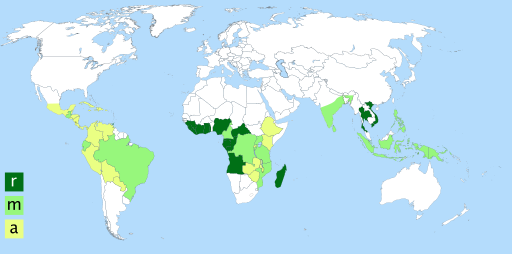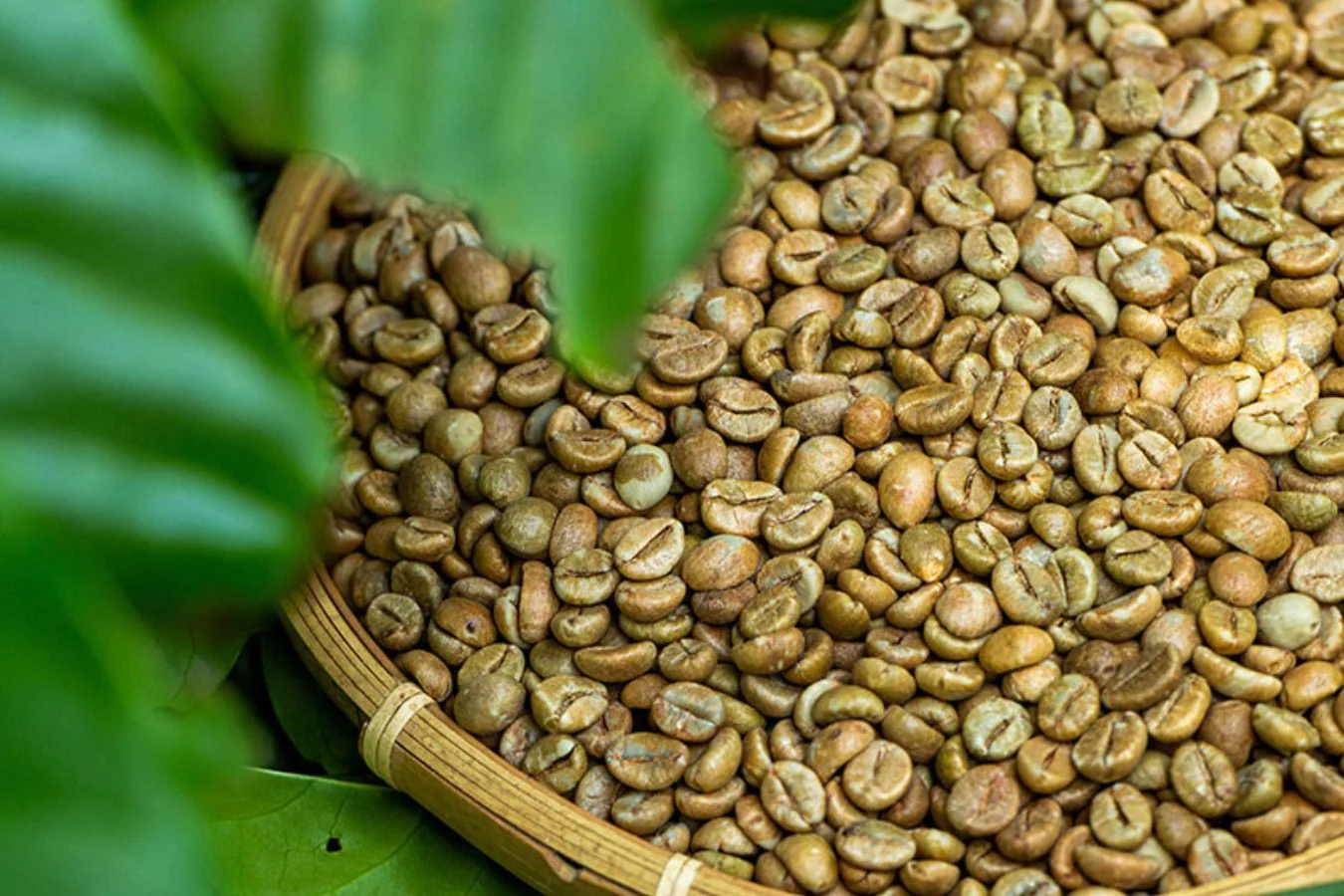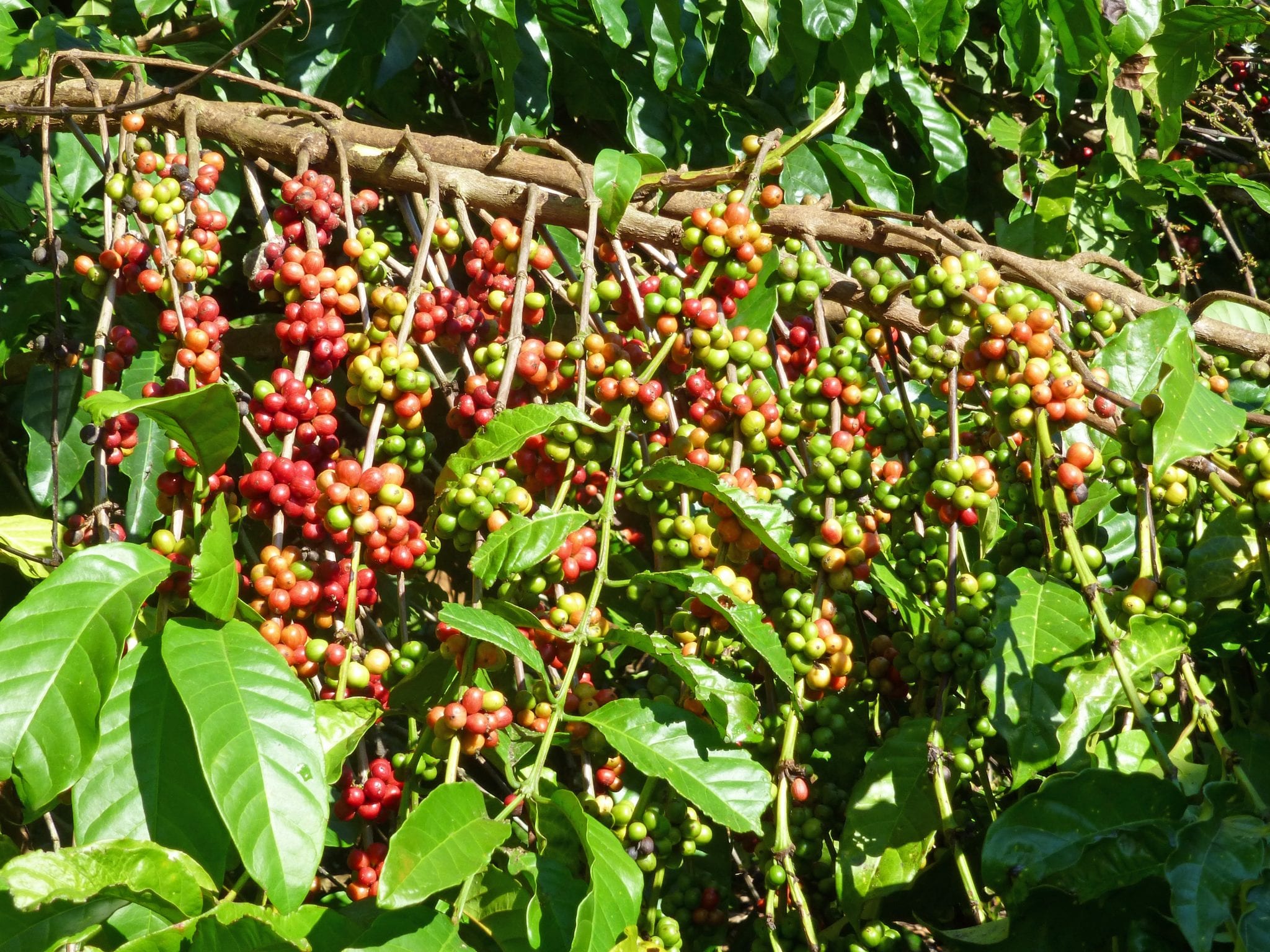Today, Arabica has dominated most of the coffee market due to its popular flavor profile, but various factors, including growing demand for coffee, have led to the expand Robusta coffee production. Because this type of coffee requires strict growing conditions and possesses a relative degree o resistance, it is capable of ensuring crop productivity. Robusta coffee production also expanded rapidly after the appearance of instant coffee in the 1950s.
The leading robusta coffee producing countries globally today are Vietnam, Brazil, Indonesia, Uganda and India, these “Top 5” countries together produce more than 90% of the world’s Robusta coffee. Of these, Vietnam and Uganda are the leading exporters of Robusta coffee (as Brazil retains a significant portion of its production for domestic consumption). However, an increasing number of countries that currently – or previously – focused exclusively on Arabica coffee production are starting to explore Robusta coffee; Like Mexico, Nicaragua, Guatemala and Colombia, among others. In addition, more and more individuals and organizations have turned to exploring the potential of robusta coffee to improve coffee quality.

About Robusta
The interest in Robusta coffee production at the global level lies in the fact that it can be grown in a wider range of climates and altitudes than Arabica coffee, which requires more demanding conditions. the correct growing conditions, such as thick shade and high altitude. In contrast to Arabica coffee, Robusta coffee plants often have higher harvest yields, contain higher caffeine content, lower sugar content, higher soluble solids content and are less susceptible to pests and diseases. Furthermore, robusta coffee can be grown in hotter, more humid regions, is found at lower altitudes between 200 – 800 meters above sea level, and often requires less fertilization through fertilizers. herbicides and pesticides.
Despite these attributes, Robusta coffee is still sensitive to environmental fluctuations. Many studies show that Robusta coffee’s ability to thrive in hotter climates can be overstated and that temperatures above 20.5℃ can have a significant negative impact on yields. In addition, many Robusta coffee varieties are still susceptible to major diseases and pests, such as coffee leaf rust, stem borers, coffee anthracnose (Coffee Berry Disease), and leaf borers. fruit, nematodes, and many other diseases…
Robusta coffee is generally easier to cultivate, has higher yields, and is more efficient in production than Arabica coffee. Ongoing climate projections of rising temperatures and changing rainfall patterns by 2050 by World Coffee Research suggest that Arabica coffee farming may no longer be sustainable in the future. In the coming years, this could increase Robusta coffee production to a significant level. Even so, robusta coffee faces its own climate limitations and vulnerabilities.
However, Robusta coffee often has large differences in taste and quality. For example, Robusta coffee often has lower acidity, higher bitterness, and a fuller body. Additionally due to its higher pyrazine content, Robusta often exhibits a characteristic earthy odor. But when handled and processed properly, Robusta can manifest as a product for specialty markets (Ugandan Coffee Development Authority, 2019).
Biodiversity of Robusta
Many different common terms are used to describe Robusta coffee in the places where it is grown. Including “Robusta” (or “robust coffee” in Vietnam), “conilon”, “nganda”, “koillou/quillou” and many other terms. These terms are often regional, colloquial, and do not necessarily correspond to breeds carrying specific genetic differences that have been developed and marketed by breeders over the years.
Because Robusta is a cross-pollinated crop – a single Robusta plant cannot effectively pollinate its own flowers (as an Arabica plant can); Scientists call this “Allogamous,” and so individuals grown on the same farm often cross-pollinate with each other. A consequence of this pollination system is that the majority of Robusta coffee grown will be made up of unselected populations obtained from open-pollinated seeds.
Simply put, Robusta coffee plantations are genetically heterogeneous; As a result, many Robusta coffee farmers often have little awareness of the variety or subtype they are growing. This is why it is common for C. canephora to be referred to simply as “Robusta” – in trade since about 1900.
Because Robusta coffee is cross-pollinated (meaning it needs pollen from two different plants to produce new fruit), farmers need to grow more than one variety of Robusta coffee on their farm to be effective. productivity. A number of breeding programs have been developed to create “multiline varieties” that intentionally mix genetically distinct clones.
History of Robusta

Robusta (scientific name: Coffea canephora Pierre ex A. Froehner) originates from humid lowland forests in tropical Africa, a wide natural geographical distribution area from Guinea to Uganda and Angola, growing develops in many forms and ecological types. However, it is difficult to know with certainty the exact natural origin of cultivated species due to the widespread introduction and naturalization of various subspecies in farming practices. In the wild, Robusta is usually found in the understory of moist evergreen forests (sometimes in seasonal wet/dry forests or corridor forests) at altitudes ranging from 50 to 1500 m above sea level. .
Cultivation of the species began around 1870 in the Congo, with seeds coming from the Lomami River region of the Republic of Zaire – now known as the Democratic Republic of the Congo. A subtype of Robusta called ”kouillou” (later renamed “conilon” due to linguistic distortion when introduced to Brazil) was found in the wild by the French in 1880 between Gabon and the mouth of the Congo River, mainly along the Kouilou-Nari river area. This species was named C. canephora by botanist Louis Pierre in 1895.
In the early 20th century, the species began to spread to other parts of the world. Robusta seeds from the Congo were sent to Belgian Brussels (during its colonial period), and from there “Robusta” was sent to Java, Indonesia, where it was quickly adopted by farmers due to its productivity and resistance to coffee leaf rust – when a major outbreak occurred in Southeast Asia in the late 1800s. From this initial variety, the name “Robusta” was later supplemented with genetic resources new from Gabon and Uganda. Around the same time, other Robusta coffees selected from wild coffee populations were introduced to areas of Ivory Coast, Guinea and Uganda.
From here, Robusta coffee continued to move around the world, first appearing in India with seeds from Java and Indonesia – then imported from West Africa. Robusta coffee plants selected in Java were brought back to Central Africa from 1910 onwards, and to the Belgian Congo in 1916 at the Congolese National Institute of Agricultural Research (INEAC), which played a key role in selective varietal development between 1930 and 1960. In Africa, Robusta coffee production developed in Madagascar, Uganda, Ghana and Ivory Coast, often interspersing endemic varieties with introduced varieties. commercial production in other parts of the continent. The main driving force for the spread of Robusta coffee during this period stemmed from the spread of rust disease on coffee leaves.
Robusta coffee was then introduced to Latin America – specifically Brazil, and Central America via Guatemala between 1930 and 1935. Additionally, the Center for Tropical Agronomy Research and Teaching (CATIE) in Costa Rica introduced Robusta trees called “French lines” from around 1981 – 1983.
“Today, countries within Asia and Oceania are the largest producers of Robusta coffee, generating 60% of the world’s production at 41.5 million 60 kg bags per year. Following this region is South America, which produces 28% of the world’s robusta coffee market share, creating 19.8 million bags of coffee in the 2020-2021 crop year.”
ICO, 202




